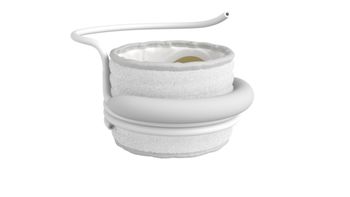
Checking the pulse on green lighting: The promise of prior authorization efficiency in health care
Green lighting has emerged as a more efficient and flexible solution to the prior authorization dilemma
The cumbersome
This time-consuming process also brings issues related to health insurance benefits, eligibility gaps, and the evolving landscape of coverage rules. Recognizing these challenges, some states and health care systems have embraced
Although gold carding has garnered a lot of attention
Enter the green lighting era
Against a backdrop of doubt, a data-driven alternative called "green lighting" has emerged as a more efficient and flexible solution to the prior authorization dilemma. Green lighting utilizes real-time, physician-specific, and code-specific data to enable qualifying physicians to avoid prior authorization requirements while maintaining quality and cost control. Physicians with high prior authorization approval rates are guided along a notification path where approval is unnecessary; they only need to express their intention to perform the service. This system also allows for immediate adjustment if physician performance shifts rather than
The impact on physicians
Green lighting helps make the prior authorization process more efficient and less abrasive for physicians. It uses a more collaborative approach between health plans and physicians, so patients receive more timely care. Additionally, it opens the ability to consistently monitor utilization in real-time. This means observing and acting on a physician's actions immediately after obtaining this status, without the typical delay of three to six months, allowing for the ongoing assessment of medical necessity.
There is also room for suggesting alternative care sites for procedures without outright denying the necessity of the green lighting process. For example, proposing that a "green lit" procedure might be more appropriate in an outpatient vs inpatient setting enables influences without requiring authorization. The goal is to foster ongoing dialogue and collaboration, ensuring a continuous exchange of information and perspectives, which is catapulted by a robust data-powered approach.
Sharing data is essential. We physicians respond to data, and green lighting empowers us with that information while providing a more timely and flexible solution to prior authorization.
Additional key advantages of green lighting include the following:
Prioritized patient outcomes: Green lighting utilizes real-time data to ensure high-quality care remains central to the authorization process. Ongoing monitoring and analysis of all ordered and performed medical services that would typically be subject to prior authorization, even those following a notification-only green lighting process, improve the process without harming patient outcomes.
Reduced paperwork: Green lighting outperforms gold carding by speeding up prior authorization through automated data and analytics. It reduces administrative burdens for physicians and health plans, minimizing errors for more accurate determinations and faster patient access to care.
Physician evaluations: Unlike concerns associated with potential
Navigating the path to smarter prior authorization
As we look to the future of prior authorization processes, it is clear that data-driven techniques like green lighting are essential to keep pace with technological advances and patient expectations. Green lighting's real-time, automated approach provides precise control without the delays or manual work associated with traditional gold carding programs. As more health care organizations recognize the advantages of green lighting, the industry will continue to focus on data and analytics as essential tools for enhancing the quality, accessibility, and cost-effectiveness of care.
About the author
Dr. Mary Krebs serves as Medical Director at
Newsletter
Stay informed and empowered with Medical Economics enewsletter, delivering expert insights, financial strategies, practice management tips and technology trends — tailored for today’s physicians.








